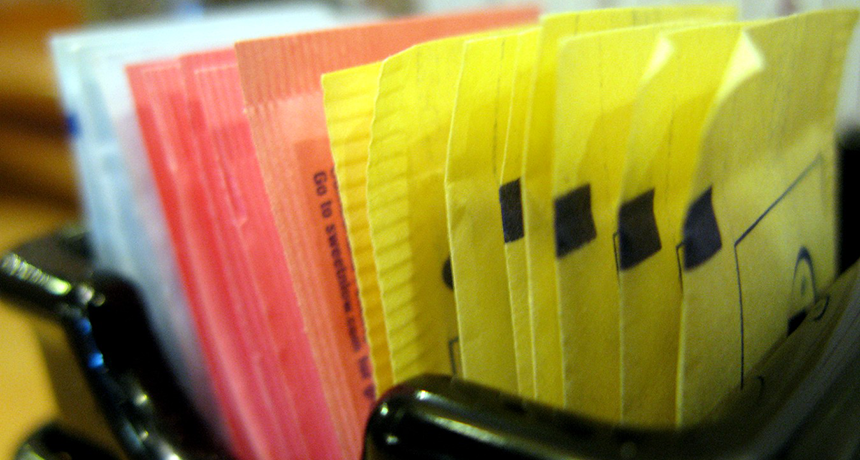
Artificial sweeteners can have a not-so-sweet side — a bitter aftertaste. Their flavors can be such a turnoff that some people never use them. Decades ago, people noticed something special about two of these artificial sweeteners:saccharin and cyclamate. Each tastes bitter on its own. But that bitterness disappears when they’re consumed together. At last, scientists know why.
On its own, each sweetener stimulates both sweet and bitter sensations. But when taken together, each sweetener blocks at least some of the other’s bitterness.
The result could make your bitter soft drink better. And that could point scientists to the next super sweetener.Our tongues are covered in receptors. These are molecules that serve as docking stations for certain chemicals. Tongue receptors are specific to various tastes: sweet, salty, sour, bitter and savory (also called umami).
Artificial sweeteners taste sweet because their chemical structure activates receptors on the tongue for sweet taste. Saccharin is 300 times as sweet as sugar. Cyclamate is 30 to 40 times sweeter than the real deal. Saccharin has been in use since its discovery in 1879. It’s best known as Sweet’N Low in the United States. Cyclamate was initially approved in the United States in 1951. But it was banned as a food additive in 1969 over concerns that it caused cancer in rats. It remains popular elsewhere. In fact, it’s the sweetener in Canada’s version of Sweet’N Low.
Yet many artificial sweeteners don’t activate just sweet receptors. Their structures tickle bitter receptors, too. The result is a sweet start but a bitter aftertaste. Saccharin and cyclamate both have bitter ends. In the 1950s, scientists realized that combiningthe two wasn’t nearly as bitter as was either by itself.
The mixture is still available in Europe. There, it’s sold under brand names such as Assugrin.But scientists didn’t know why the combo was such a sweet deal. One reason: Scientists simply didn’t know a lot about how we taste. The receptors for bitter flavors were only discovered in 2000, explains Maik Behrens. He works at the German Institute of Human Nutrition Potsdam-Rehbrűcke. There, he studies molecular biology — the role of molecules that are essential for life.
…
The post When bitter + bitter = sweet appeared first on FeedBox.